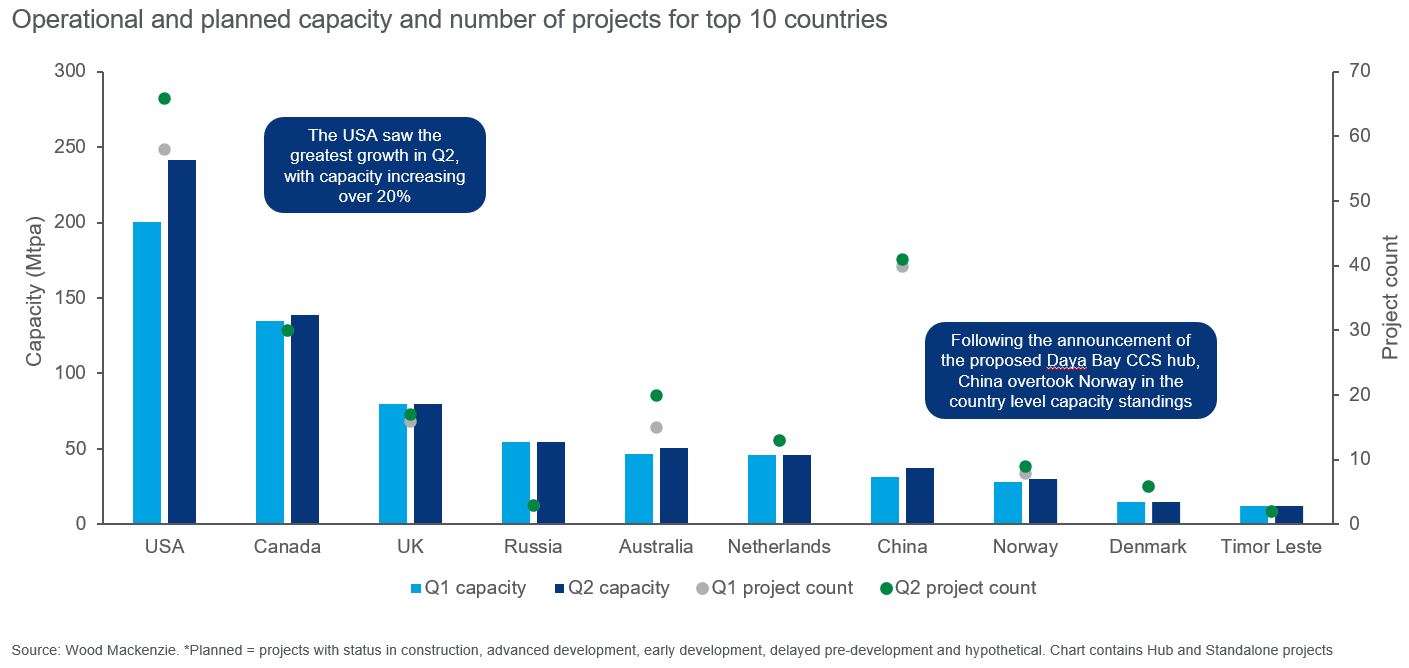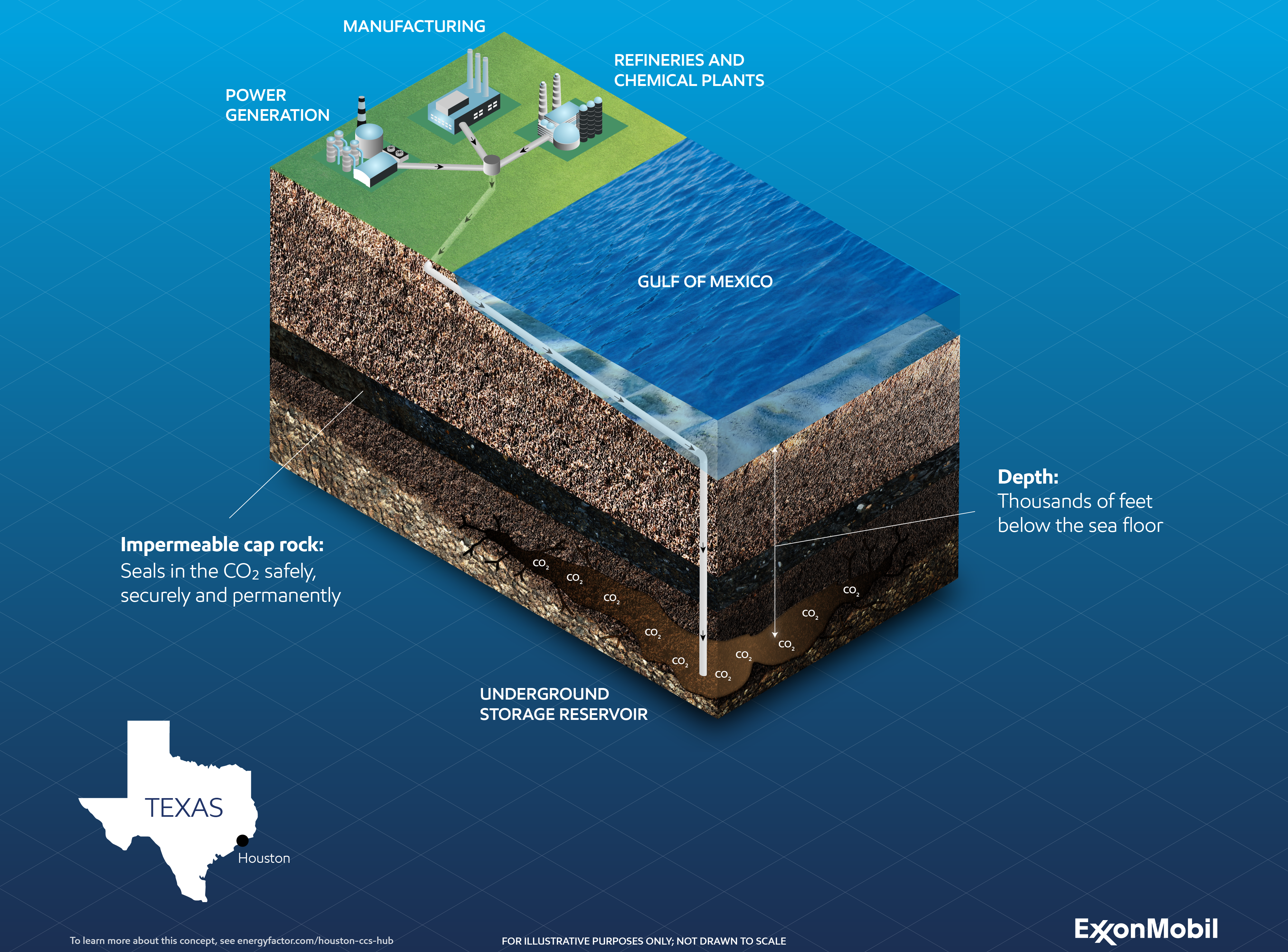ExxonMobil announced the major step of its plan to develop the world’s largest low-carbon hydrogen production facility, with a contract for front-end engineering and design (FEED) awarded to Technip Energies.
The oil giant will build the largest low-carbon hydrogen production plant in the world in Baytown Refinery near Houston, Texas. ExxonMobil awarded its FEED contract to French-headquartered Technip Energies.
Technip Energies is an engineering and technology company for the energy transition that has long had a strong presence in the area.
Exxon says it plans to come to a final investment decision in the Baytown hydrogen plant in 2024. Stakeholder’s support, permits, and market conditions will dictate how the project goes.
World’s Biggest Low-Carbon Hydrogen Plant
The proposed facility will cost Exxon $7 billion to develop. The plant can produce 1 billion cubic feet (bcf) of low-carbon hydrogen daily, making it the world’s largest facility.
It will also produce an undisclosed volume of ammonia, a key fertilizer ingredient.
The oil and gas corporation also adds that it will capture and permanently store over 98% of the facility’s carbon emissions. That amounts to around 7 million metric tons (Mt) of carbon dioxide each year.
Such goal is in coordination with its major carbon capture and storage (CCS) project it’s currently developing in the Houston and Gulf Coast area. It has the capacity to store up to 10 million Mt of CO2 each year.
-
The current global CCS capacity is 63 million tonnes per year (Mtpa).
The planned pipeline is 14x that amount – 1 billion tonnes. The bulk of capacity as of Q2 2022 resides in the U.S. and Canada as seen in the chart below. But by 2030, capacity in Asia and Europe will be higher, according to energy intelligence firm Woodmac.
The CCS network for Exxon’s project will be made available for use by 3rd-party CO2 emitters in the area. The firm has offtake agreements under discussion with these third party customers.
According to Dan Ammann, President of ExxonMobil Low Carbon Solutions, the project allows them to offer “significant volumes of low-carbon hydrogen and ammonia to third party customers in support of their decarbonization efforts”. He further said that:
“In addition, the project is expected to enable up to a 30% reduction in Scope 1 and 2 emissions from our Baytown integrated complex, by switching from natural gas as a fuel source to low-carbon hydrogen…”
The announcement comes after Exxon unveiled last week that it has stopped routine flaring of natural gas in its Permian Basin operations. It’s also part of the company’s advocacy for stronger regulations to reduce flaring in the industry overall.
Exxon’s Carbon Reduction Plans
Exxon aims to reduce its Scope 1 and Scope 2 GHG emissions from its operated facilities. The end goal is to reach net zero emissions in those categories by 2050.
“It levels the playing field. We need strong regulations so it doesn’t matter who owns the facility,” says Exxon’s chief environmental scientist Matt Kolesar.
In 2021, the company revealed its carbon emissions reduction plans for 2030 compared to 2016 levels.
The plan is to achieve these targets:
- 20-30% reduction in corporate-wide greenhouse gas intensity;
- 40-50% reduction in greenhouse gas intensity of upstream operations;
- 70-80% reduction in corporate-wide methane intensity; and
- 60-70% reduction in corporate-wide flaring intensity.
Moreover, Exxon also announced last year that it expects to capture as much as 50 million Mt of CO2 by 2030. And with various CCS projects worldwide, that capacity will increase to 100 million Mt by 2040.
In its Houston Ship Channel, the company said that it’s working with 14 other firms to boost their CCS efforts.
The CCS network is worth $100 billion initially. It will capture CO2 from the tailgates of those plants and store it in underground formations. Storage options would be below the Gulf of Mexico or the nearby coastal areas.
Exxon’s next move is to launch a satellite later in 2023 to help it track its GHG emissions in the Permian Basin and to cut them. It will pair the world’s largest low-carbon hydrogen facility with the biggest olefins plant in the country to make more sustainable, lower-emissions products.
Hydrogen is a hot topic on clean energy transitions. Green hydrogen, in particular, gets a lot of traction and is hailed as the energy of the future. Subsidy programs this year will help ensure that this low-carbon hydrogen becomes a large-scale source of renewable energy.
The Baytown low-carbon hydrogen plant will be commissioned between 2022 and 2027. Its initial startup is sometime in the 2027- 2028 timeline, says Exxon.




